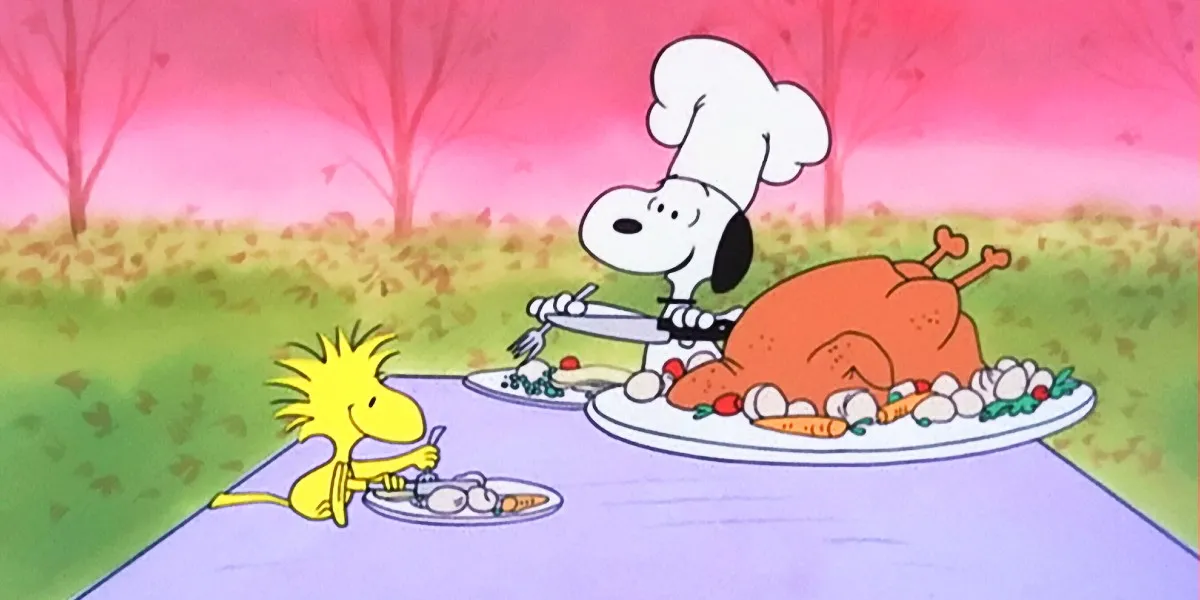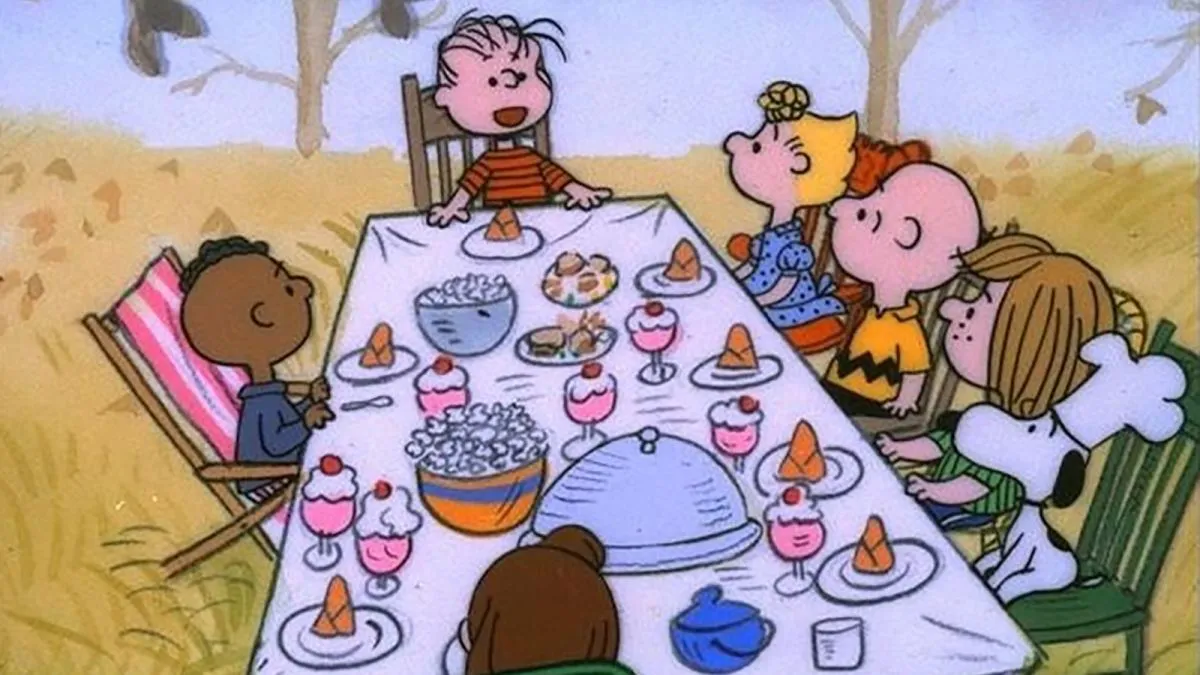For many families, watching A Charlie Brown Thanksgiving is a holiday tradition. However, in recent years, viewers have become divided over one scene, questioning whether it is racist or a mere coincidence.
A Charlie Brown Thanksgiving is an animated TV special based on the Peanuts comics by Charles M. Schulz. It follows Charlie Brown (Todd Barbee), who finds himself in a tricky situation, given that Peppermint Patty (Christopher DeFaria) invites herself and all their friends to his home for Thanksgiving dinner. Viewers will chuckle at Charlie trying to create a Thanksgiving feast for all his friends with little time. However, they’ll find it heartwarming when he and his friends all learn a lesson about friendship and gratitude.
It’s a light-hearted, family-friendly TV special that will hit hard on the nostalgia for adults while being short and sweet enough for younger audiences to sit through. Of course, A Charlie Brown Thanksgiving isn’t meant to be taken too seriously. For example, parents shouldn’t rely on this as their child’s only introduction to Thanksgiving, as Linus (Stephen Shea) briefly summarizes the first Thanksgiving dinner in a way that idealizes the relationship between the Native Americans and pilgrims.
However, Linus’ summary isn’t the biggest problem viewers have found with the TV special.
Is A Charlie Brown Thanksgiving racist?

Controversy has arisen over A Charlie Brown Thanksgiving’s depiction of Franklin (Robin Reed), the only Black character in the TV special. The scene that has caught the most attention is where Charlie and his friends sit down for a Thanksgiving meal. Viewers will notice that Linus and Marcie (Jimmy Ahrens) sit at the head and end of the table. Meanwhile, one side is occupied by Sally (Hilary Momberger), Charlie, and Snoopy. However, all alone on the other side is Franklin. Many find the scene uncomfortable and question why Franklin is seemingly left out and separated from the group.
This isn’t the first year that conversation has arisen around this scene. Three years ago, Schulz’s wife, Jean Schulz, spoke out about the scene and addressed viewers’ concerns. Jean largely sought to clear her late husband’s name in the matter, explaining that he only wrote the script for the special and didn’t have anything to do with the animation. In a blog post, Jean took a firmer stance on the topic and wrote, “While it can’t be known now which animator drew that particular scene, you can be sure there was no ulterior motive. Sparky [Schulz] created Franklin’s character out of sincerity with the intention of inclusiveness.”
Jean did admit that Schulz sometimes didn’t know what to do with Franklin, which is why he noticeably didn’t have “the personality quirks” other characters boasted. CBR suggests that A Charlie Brown Thanksgiving tried to remedy his lack of personality by giving him the funny moment where his chair breaks at the table. If he hadn’t been seated alone, getting the full seat in view of the audience would’ve been difficult.
Even if the seat placement could be explained, the problem goes deeper. Jean summarizes the issue quite well when admitting that Schulz didn’t know what to do with Franklin or what quirks to give him. She also admitted he created Franklin at the behest of schoolteacher Harriet Glickman. A Black character being included in a comic strip at that time was a huge milestone for inclusion, but today, it’s better understood that adding a BIPOC character just to be able to say, “Look, we have diversity,” isn’t sufficient.
That inclusion needs to be accurate and meaningful. Schulz’s focus on adding a Black character without seemingly feeling very strongly about accurately depicting this character may be responsible for today’s controversy. The awkward handshake and high-five Franklin greets Charlie with and his spot at the dinner table in A Charlie Brown Thanksgiving feel uncomfortable because they are uncomfortable.
Perhaps if a Black animator or writer had provided feedback, these scenes would have felt more natural. Instead, they seem to come from a team that wants diversity and inclusion but lacks the perspective to flesh out Franklin and give him a natural personality and the same quirks as other characters. A Charlie Brown Thanksgiving doesn’t seem maliciously racist, but it is more evidence of why we need diversity both behind and in front of the camera.
The special might have meant well, but it’s really not surprising that a white creative team that grew up accustomed to racism and segregation—the movie was released in 1973—depicted a Black character in a way that was uncomfortable.
(featured image: CBS)









Published: Nov 22, 2023 03:26 pm